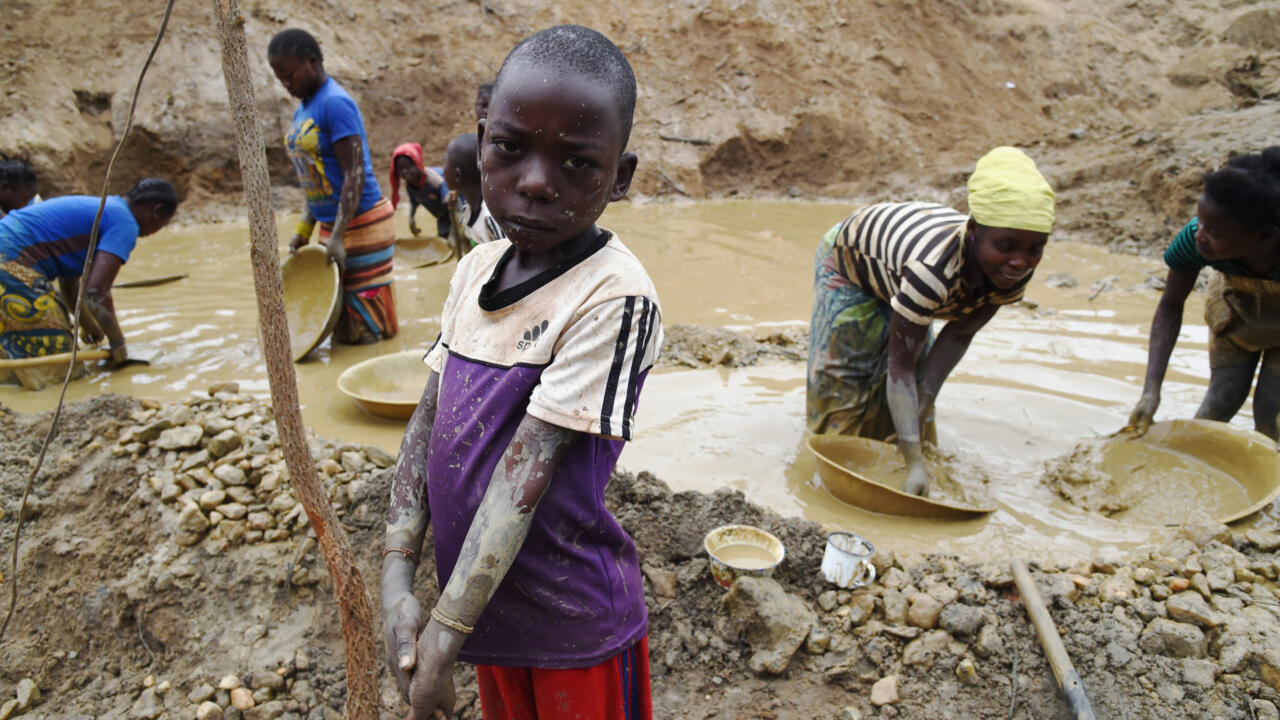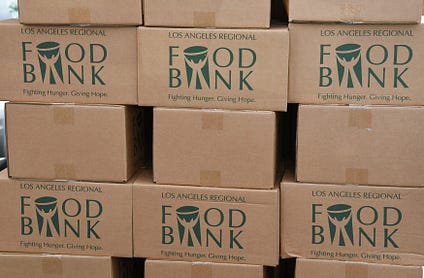UNICEF: 20% of world’s children still trapped in extreme poverty – UN News

Report on Multidimensional Child Poverty and its Intersection with Sustainable Development Goals
Introduction and Scope
A recent analysis based on data from over 130 low and middle-income countries reveals critical insights into the state of multidimensional child poverty, a direct challenge to the achievement of the Sustainable Development Goals (SDGs). The report assesses child deprivation across six key dimensions that are intrinsically linked to the 2030 Agenda: education (SDG 4), health (SDG 3), nutrition (SDG 2), housing (SDG 11), sanitation (SDG 6), and water (SDG 6). The findings indicate that nearly 90 percent of children living in such conditions are concentrated in Sub-Saharan Africa and South Asia, highlighting severe geographic disparities in SDG progress. Even in high-income countries, 23 percent of children experience significant income inequality relative to their peers, underscoring the universal relevance of SDG 10 (Reduced Inequalities).
Key Findings in Relation to Sustainable Development Goals
The report’s findings illustrate the interconnected nature of the SDGs and the profound impact of poverty on child development. Failure to address these issues jeopardizes progress across the entire 2030 Agenda.
- SDG 1 (No Poverty): The analysis finds that 118 million children suffer from deprivation in three or more of the assessed areas. This severe, multidimensional poverty undermines children’s health, educational attainment, and future economic prospects, creating a cycle of intergenerational poverty.
- SDG 6 (Clean Water and Sanitation): Progress towards this goal is critically insufficient. In low-income countries, 65 percent of children lack access to a toilet, which significantly increases their exposure to preventable diseases and hinders the realization of SDG 3 (Good Health and Well-being).
- SDG 10 (Reduced Inequalities): The extreme concentration of child poverty in Sub-Saharan Africa and South Asia points to a profound failure to reduce inequalities between countries.
Progress and Challenges to SDG Achievement
While progress has been made, it is now stalling due to a confluence of global challenges that threaten to reverse gains and prevent the attainment of the SDGs.
- Overall Progress: In low and middle-income countries, multidimensional child deprivation decreased from 51 percent in 2013 to 41 percent in 2023.
- National Policy Impact: Government-led social protection programs have proven effective. Tanzania achieved a 46 percent reduction in multidimensional child poverty between 2000 and 2023, and Bangladesh achieved a 32 percent reduction, demonstrating that targeted national policies can accelerate progress on SDG 1.
- Stalling Factors: Progress is being undermined by several factors that cut across the SDG framework, including conflict (SDG 16), climate pressures, technological divides, and cuts to international funding (SDG 17).
- Threat to SDG 4 (Quality Education): Reductions in foreign aid could lead to an additional six million children being left out of school by next year, representing a significant setback for global education targets.
Policy Recommendations for Accelerating SDG Attainment
To overcome these challenges and achieve the 2030 Agenda, the report outlines a series of integrated policy actions.
- Make the eradication of child poverty a national priority, central to all strategies aimed at achieving SDG 1.
- Integrate children’s needs into all economic policies and national budgets to ensure coherent progress across multiple SDGs.
- Provide and expand social protection programs, including cash support for families, as a direct mechanism to advance SDG 1 and SDG 10.
- Expand universal access to essential services to directly support the achievement of:
- SDG 4 (Quality Education)
- SDG 3 (Good Health and Well-being)
- SDG 6 (Clean Water and Sanitation)
- SDG 2 (Zero Hunger) via nutrition services
- SDG 11 (Sustainable Cities and Communities) via adequate housing
- Promote decent work for parents and caregivers to strengthen household economic stability, in direct alignment with SDG 8 (Decent Work and Economic Growth).
SDGs, Targets, and Indicators Analysis
1. Which SDGs are addressed or connected to the issues highlighted in the article?
-
SDG 1: No Poverty
- The article’s central theme is child poverty. It explicitly states that “Nearly 90 per cent of those children [living in poverty] are in Sub-Saharan Africa and South Asia” and discusses the concept of “multidimensional child poverty.” The entire article revolves around understanding and reducing child poverty, directly aligning with SDG 1.
-
SDG 2: Zero Hunger
- The article identifies “nutrition” as one of the six key areas used to assess deprivation in children. This directly connects to the goal of ending hunger and ensuring access to sufficient and nutritious food.
-
SDG 3: Good Health and Well-being
- “Health” is listed as a primary area of deprivation. The article also states that poverty “undermines children’s health” and that a lack of sanitation increases “exposure to disease,” linking poverty directly to health outcomes.
-
SDG 4: Quality Education
- The article names “education” as a key dimension of child poverty. It warns that funding cuts “could leave six million more children out of school by next year,” highlighting the direct threat to educational access.
-
SDG 6: Clean Water and Sanitation
- The report assesses deprivation across “sanitation and water.” It provides a specific statistic that in low-income countries, “65 per cent of children lack access to a toilet,” which directly addresses the core issues of SDG 6.
-
SDG 8: Decent Work and Economic Growth
- As a solution to reduce child poverty, the article recommends to “Promote decent work for parents and caregivers to strengthen household stability.” This links the economic well-being of adults directly to the welfare of children.
-
SDG 11: Sustainable Cities and Communities
- “Housing” is mentioned as one of the six critical areas of deprivation for children. This relates to the goal of ensuring access to adequate and safe housing.
2. What specific targets under those SDGs can be identified based on the article’s content?
-
Target 1.2: Reduce poverty in all its dimensions
- The article focuses on “multidimensional child poverty” and cites examples of its reduction, such as “Tanzania cut so-called multidimensional child poverty by 46 per cent.” This aligns perfectly with the target of reducing at least by half the proportion of people living in poverty in all its dimensions.
-
Target 2.2: End all forms of malnutrition
- By identifying “nutrition” as a key area of deprivation for children, the article implicitly addresses the goal of ending malnutrition.
-
Target 4.1: Ensure free, equitable and quality primary and secondary education
- The article’s warning that “six million more children out of school” could result from funding cuts directly relates to the target of ensuring all children complete their education.
-
Target 6.2: Achieve access to adequate and equitable sanitation and hygiene for all
- The specific mention that “65 per cent of children lack access to a toilet” in low-income countries directly corresponds to this target, which focuses on ending open defecation and providing access to sanitation.
-
Target 8.5: Achieve full and productive employment and decent work for all
- The recommendation to “Promote decent work for parents and caregivers” is a direct call to action that supports this target as a means to alleviate household and child poverty.
-
Target 11.1: Ensure access for all to adequate, safe and affordable housing
- By listing “housing” as one of the six areas of deprivation, the article points to the importance of this target in achieving overall well-being for children.
3. Are there any indicators mentioned or implied in the article that can be used to measure progress towards the identified targets?
-
Indicator for Target 1.2: Proportion of children living in multidimensional poverty
- The article provides several data points for this indicator. It states that the proportion of children in low and middle-income countries experiencing deprivation “dropped from 51 per cent in 2013 to 41 per cent in 2023.” It also gives country-specific reduction figures for Tanzania (46%) and Bangladesh (32%).
-
Indicator for Target 4.1: Number of out-of-school children
- The article uses this indicator directly when it warns that “cuts could leave six million more children out of school by next year.” This figure measures the direct impact of policy and funding on education access.
-
Indicator for Target 6.2: Proportion of population with access to basic sanitation services
- The statistic that “65 per cent of children lack access to a toilet” in low-income countries serves as a direct measure for this indicator, highlighting the scale of the sanitation crisis for children.
-
Implied Indicators for other targets
- While not providing specific numbers, the article implies the use of indicators related to the prevalence of malnutrition (Target 2.2), child health outcomes (related to SDG 3), access to adequate housing (Target 11.1), and rates of decent work among adults (Target 8.5) by listing these as key areas of deprivation or as necessary solutions.
4. Summary Table of SDGs, Targets, and Indicators
| SDGs | Targets | Indicators |
|---|---|---|
| SDG 1: No Poverty | 1.2: By 2030, reduce at least by half the proportion of men, women and children of all ages living in poverty in all its dimensions according to national definitions. | Proportion of children living in multidimensional poverty (e.g., reduction from 51% to 41% in low/middle-income countries; 46% reduction in Tanzania). |
| SDG 2: Zero Hunger | 2.2: By 2030, end all forms of malnutrition. | Prevalence of nutritional deprivation (Implied by the article listing “nutrition” as a key area of deprivation). |
| SDG 3: Good Health and Well-being | Targets related to child health and mortality. | Prevalence of health deprivation (Implied by the article listing “health” as a key area of deprivation and stating poverty undermines health). |
| SDG 4: Quality Education | 4.1: By 2030, ensure that all girls and boys complete free, equitable and quality primary and secondary education. | Number of out-of-school children (e.g., the article warns of “six million more children out of school”). |
| SDG 6: Clean Water and Sanitation | 6.2: By 2030, achieve access to adequate and equitable sanitation and hygiene for all. | Proportion of children with access to a toilet (e.g., “65 per cent of children lack access to a toilet” in low-income countries). |
| SDG 8: Decent Work and Economic Growth | 8.5: By 2030, achieve full and productive employment and decent work for all women and men. | Employment rates for parents/caregivers (Implied by the recommendation to “Promote decent work for parents and caregivers”). |
| SDG 11: Sustainable Cities and Communities | 11.1: By 2030, ensure access for all to adequate, safe and affordable housing and basic services. | Proportion of children living in inadequate housing (Implied by the article listing “housing” as a key area of deprivation). |
Source: news.un.org
What is Your Reaction?
 Like
0
Like
0
 Dislike
0
Dislike
0
 Love
0
Love
0
 Funny
0
Funny
0
 Angry
0
Angry
0
 Sad
0
Sad
0
 Wow
0
Wow
0



















































.jpg.webp?itok=0ZsAnae9#)



























